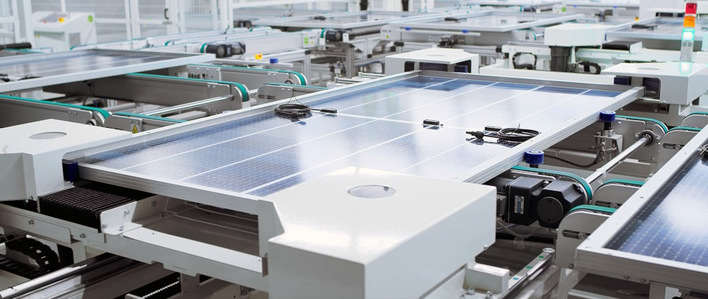The tracker designs were further optimised according to the data gathered from the tests. Based on the test results, the Company has issued a white paper about how to ensure and validate tracker stability in combination with ultra-high power PV modules.
TrinaTracker product designs include robust torque tube, stronger posts, and advanced purlins that add rigidity to the modules, as well as different stow strategies for 1P and 2P configurations according to the full aeroelastic test results, tailored tracker layout and multi-drive systems.
Large-format modules cause additional loads
PV tracking systems represent a critical investment for asset owners and investors who expect long-lasting and reliable systems to optimize returns. Nowadays, PV plants are installed in various sites, many of them with challenging terrain characteristics and extreme weather conditions. Moreover, the mounting of large-format modules, in strong demand by the industry, involves increased wind loads added to the trackers.
The solar industry has long realized that building codes do not consider the tracker specific aeroelastic effects produced by the action of wind. Therefore, more advanced analytic tests are necessary for reliable tracker design.
Subjected to static, aeroelastic and dynamic loads
Scale prototypes of TrinaTracker Vanguard 2P and Agile 1P products were reproduced according to different tilt angles, tracker length and module geometry, as well as dynamic parameters such as natural frequencies and damping. They were then subjected to static, aeroelastic and dynamic loads throughout wind tunnel tests performed by CPP and RWDI, respectively.
The wind tunnel tests comprised pressure model wind tunnel research, 2D sectional model test & numerical models and an additional full aeroelastic model test, thus going above and beyond industry standards.
Dynamic Amplification Factor attained
The pressure model made it possible to obtain a more accurate definition of the static coefficients for different distances between rows, ground clearance, post separation or tracker length.
See also: Test phase of PV noise barriers started
Furthermore, by adding the data obtained from the model analysis (natural frequencies) and the free vibration test (damping ratios), the DAF (Dynamic Amplification Factor) was attained.
Full aeroelastic model test
The 2D sectional model enabled aerodynamic stability analysis and the buffeting response analysis to be carried out using numerical models. The advantage of the data gained from the 2D sectional model is that the results can be applied to a wide range of tracker dimensions.
The full aeroelastic model test assessed the critical wind speed of the tracker by implementing the stiffness and damping parameters in the model, to avoid torsional instabilities. SBP ratified the calculation procedures that TrinaTracker adopted, with the output gathered from the wind tunnel tests.
Bankable product to asset owners and investors
Markus Balz, Managing Director of SBP, stated: “After several years of supporting tracker companies, EPCs and developers in the field of trackers, it is a relief to see TrinaTracker offering sophisticated design approaches to tackle safety and cost optimization at the same time.”
Also interesting: Vertex S solar modules now available in Europe
Jason Duan, Head of tracker business unit at Trina Solar, said: “I am proud to confirm that TrinaTracker offers a bankable product to asset owners and investors. TrinaTracker will continue to put its efforts into designing optimized tracking solutions for customers that can provide validated reliability, durability and maximum energy yield in every site.”
How will the result of the wind tunnel tests be used?
With the results obtained from the wind tunnel tests the company determined the wind loads of the main structural elements (posts, torque tube and purlin) and connecting components (bearings and drives) and provided the output to upgrade the tracker design. TrinaTracker will continue optimising its trackers to ensure the reliability and adaptability of all their components. (mfo)







